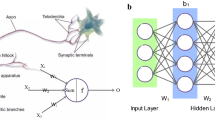Abstract
With the advent of Internet big data era, recommendation system has become a hot research topic of information selection. This paper studies the application of deep learning and distributed expression technology in e-commerce product advertising recommendation. In this paper, firstly, from the semantic level of advertising, we build a similarity network based on the theme distribution of advertising, and then build a deep learning model framework for advertising click through rate prediction. Finally, we propose an improved recommendation algorithm based on recurrent neural network and distributed expression. Aiming at the particularity of the recommendation algorithm, this paper improves the traditional recurrent neural network, and introduces a time window to control the hidden layer data transfer of the recurrent neural network. The experimental results show that the improved recurrent neural network model based on time window is superior to the traditional recurrent neural network model in the accuracy of recommendation system. The complexity of calculation is reduced and the accuracy of recommendation system is improved.










Similar content being viewed by others
References
Lange, T., Hoefges, M., & Ribisl, K. M. (2015). regulating tobacco product advertising and promotions in the retail environment: A roadmap for states and localities. The Journal of Law Medicine & Ethics,43(4), 878–896.
Adhikary, A. (2014). Advertising: A fusion process between consumer and product. Procedia Economics and Finance,11(14), 230–238.
Zhu, B., Yang, C., Yu, C., et al. (2018). product image recognition based on deep learning. Jisuanji Fuzhu Sheji Yu Tuxingxue Xuebao/Journal of Computer-Aided Design and Computer Graphics,30(9), 1778–1784.
Nair, R., & Gupta, S. (2017). Wildfire: Approximate synchronization of parameters in distributed deep learning. IBM Journal of Research and Development,61(4), 7:1–7:9.
Wei, J., He, J., Chen, K., et al. (2017). Collaborative filtering and deep learning based recommendation system for cold start items. Expert Systems with Applications,69, 29–39.
Zhang, H., Ji, Y., Huang, W., et al. (2019). Sitcom-star-based clothing retrieval for video advertising: A deep learning framework. Neural Computing and Applications,31(11), 7361–7380.
Park, J., Lee, S. J., Lee, S. J., et al. (2011). Online video recommendation through tag-cloud aggregation. IEEE Multimedia,18(1), 78–87.
Khan, S., & Yairi, T. (2018). A review on the application of deep learning in system health management. Mechanical Systems and Signal Processing,107(1), 241–265.
Li, M. X., Yu, S. Q., Zhang, W., et al. (2019). Segmentation of retinal fluid based on deep learning: Application of three-dimensional fully convolutional neural networks in optical coherence tomography images. International Journal of Ophthalmology,12(6), 1012–1020.
Moeskops, P., De, J. B., Kuijf, H. J., et al. (2018). Evaluation of a deep learning approach for the segmentation of brain tissues and white matter hyperintensities of presumed vascular origin in MRI. Neuroimage Clinical,17(C), 251–262.
Minarro-Giménez, J. A., Marín-Alonso, O., & Samwald, M. (2014). Exploring the application of deep learning techniques on medical text corpora. Studies in Health Technology and Informatics,205, 584–588.
Sun, Y., Liu, D., Li, B., et al. (2019). Application of deep reinforcement learning in demand response. Dianli Xitong Zidonghua/Automation of Electric Power Systems,43(5), 183–191.
Ardila, D., Kiraly, A. P., Bharadwaj, S., et al. (2019). End-to-end lung cancer screening with three-dimensional deep learning on low-dose chest computed tomography. Nature Medicine,25(6), 954–961.
Jeong, H. J., & Lee, M. (2014). Effects of recommendation systems on consumer inferences of website motives and attitudes towards a website. International Journal of Advertising,32(4), 539.
Wenzhe, Y. U., Rong, Z., & Li, W. (2013). Recommendation in E-commerce. Journal of East China Normal University,53(3), 46–53.
Xue-Qing, G., Li, W., & Xiao-Feng, H. E. (2013). Advertising targeting with user segmentation. Journal of East China Normal University,53(3), 70–79.
Williams, G. W., Capps Jr, O., & Hanselka, D. U. S. (2017). National economic contribution of generic food and agricultural product advertising. Journal of International Food & Agribusiness Marketing,30(1), 1–20.
Morgan, F. W., & Stoltman, J. J. (2013). Advertising and product liability litigation. Journal of Advertising,26(2), 63–75.
Lee-Wingate, S. N., & Xie, Y. (2013). The influence of the number of presented symptoms in product-claim direct-to-consumer advertising on behavioral intentions. International Journal of Pharmaceutical and Healthcare Marketing,7(3), 265–284.
Vandecasteele, F., Vandenbroucke, K., Schuurman, D., et al. (2017). Spott: On-the-spot e-commerce for television using deep learning-based video analysis techniques. ACM Transactions on Multimedia Computing Communications and Applications,13(3s), 1–16.
Hao, T., Wang, Q., Wu, D., et al. (2018). Adaptive recommendation for photo pose via deep learning. Multimedia Tools and Applications,77(17), 22173–22184.
Yi-Ou, L., Hang, L., Xiao-Yu, L. I., et al. (2017). Deep learning in NLP: Methods and applications. Journal of University of Electronic Science and Technology of China,46(6), 913–919.
Author information
Authors and Affiliations
Corresponding author
Ethics declarations
Conflict of interest
The authors declare that they have no known competing financial interests or personal relationships that could have appeared to influence the work reported in this paper.
Rights and permissions
About this article
Cite this article
Zhou, L. Product advertising recommendation in e-commerce based on deep learning and distributed expression. Electron Commer Res 20, 321–342 (2020). https://doi.org/10.1007/s10660-020-09411-6
Published:
Issue Date:
DOI: https://doi.org/10.1007/s10660-020-09411-6




